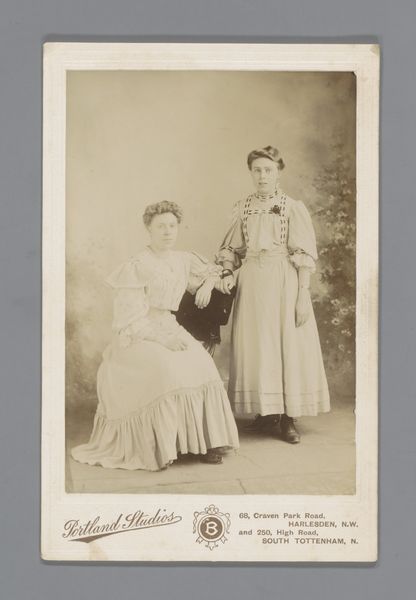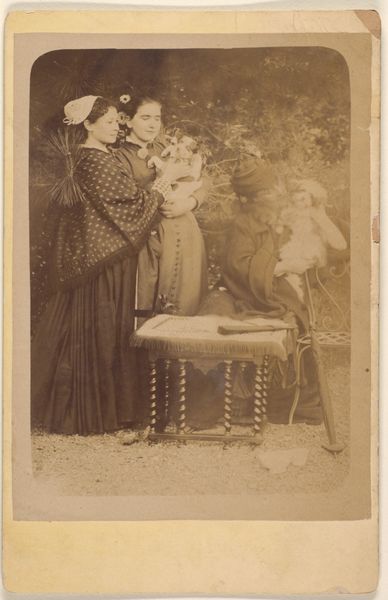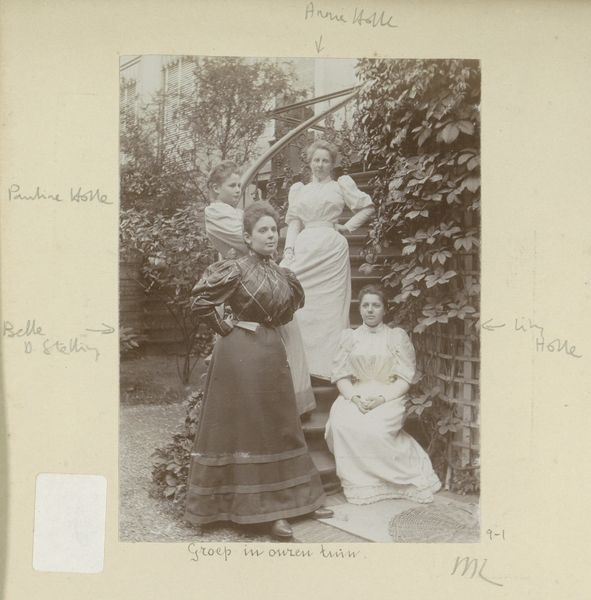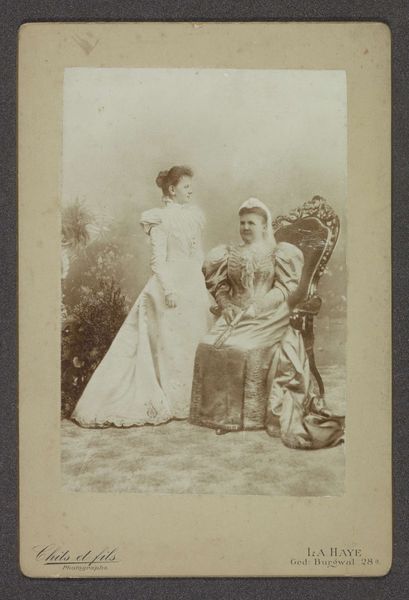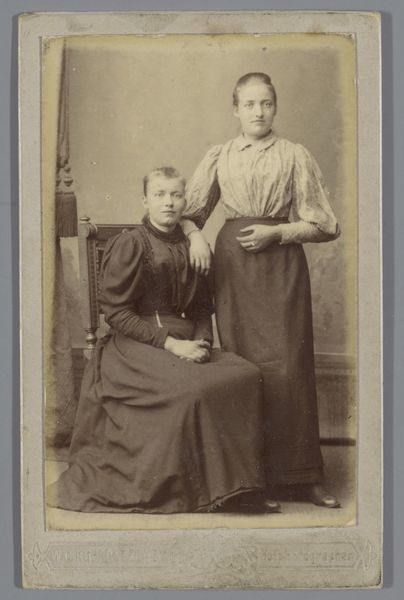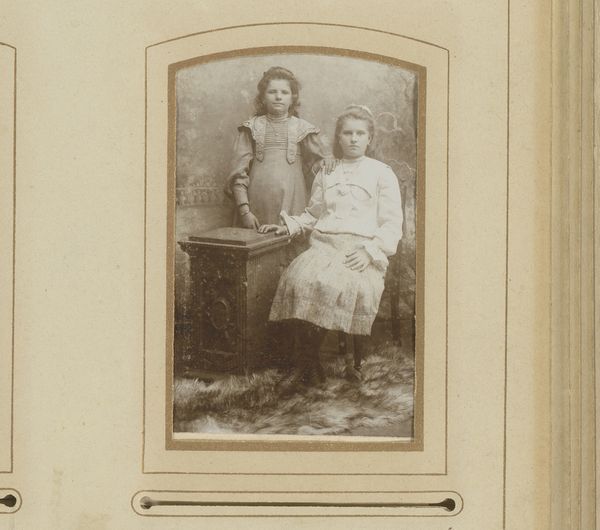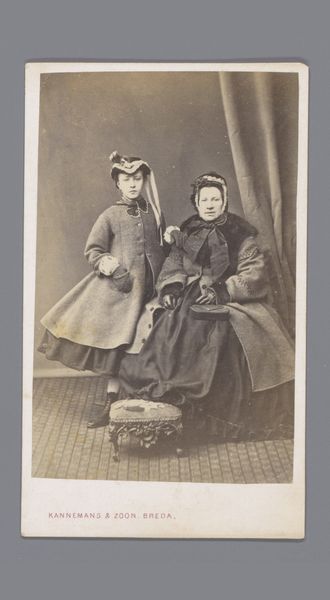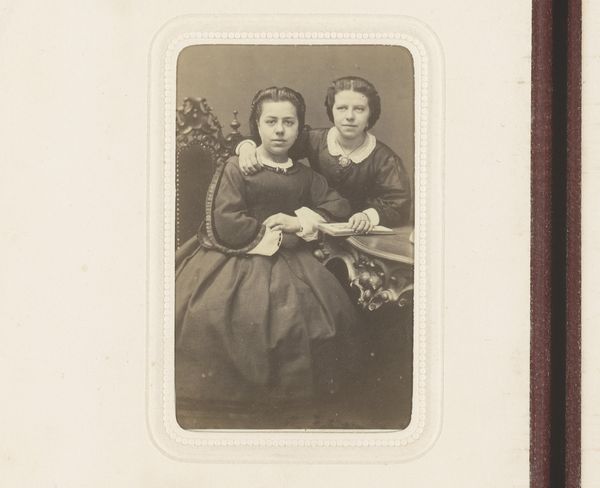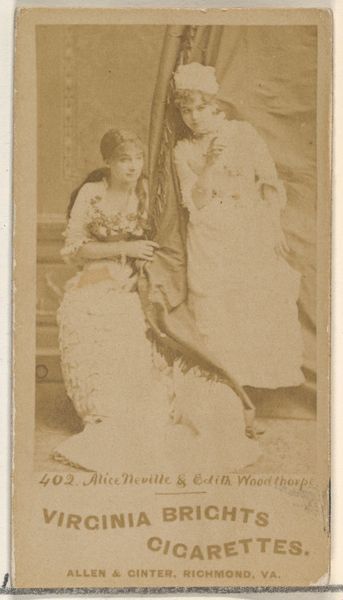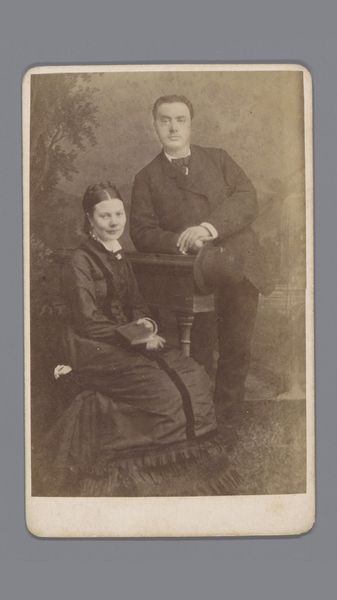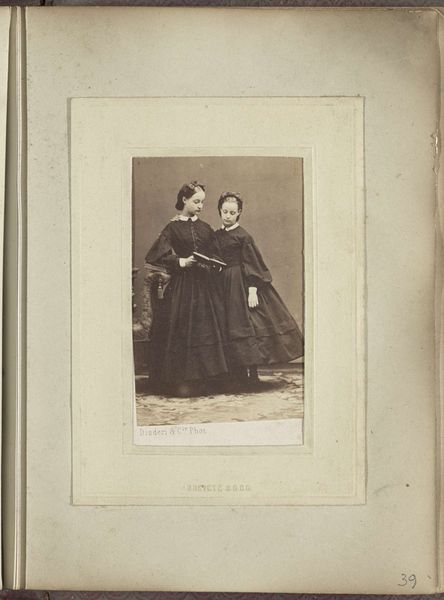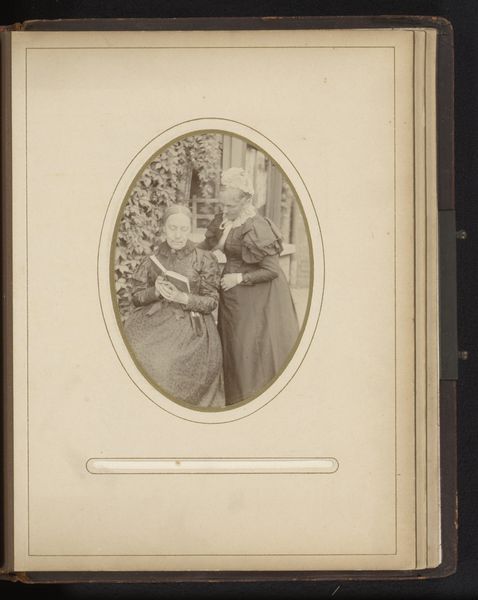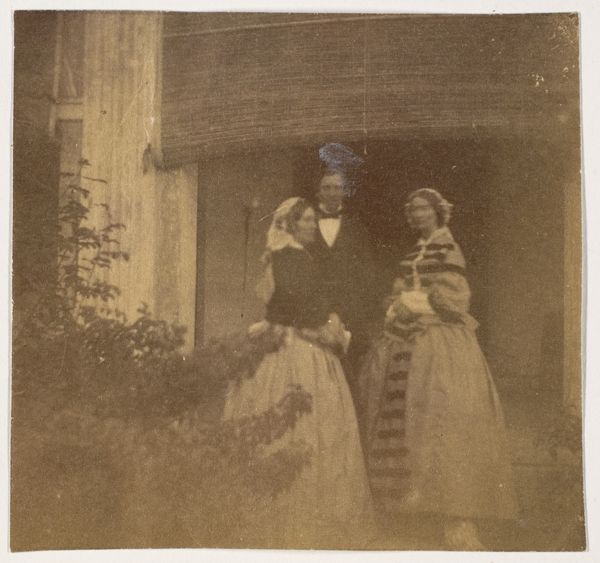
photography, gelatin-silver-print
#
portrait
#
16_19th-century
#
archive photography
#
photography
#
historical photography
#
framed image
#
gelatin-silver-print
#
19th century
#
genre-painting
Dimensions: height 137 mm, width 97 mm
Copyright: Rijks Museum: Open Domain
Editor: We're looking at "Portret van een zittende vrouw in zwart gekleed en een staande non," a gelatin silver print, dating from around 1896-1900, by Auguste Meslin. It's a compelling image, almost austere, but there's something tender in the way the two women are posed. What do you see in this piece? Curator: What strikes me is the power dynamics subtly at play. We see the sitter in black, and a standing Nun in the 19th century. The arrangement is intentional, inviting us to question the social positions and expectations of women in that era. Consider the historical context: What constraints shaped their lives? How does the very act of being photographed challenge or reinforce those norms? Editor: I hadn't thought about it in terms of power so explicitly. Is the framing itself part of the statement? Curator: Absolutely. Who is holding the camera? Who is dictating how they are presented to us? And what are they doing with it? Think about the statue next to the seated woman. Editor: I did wonder what the statue of Mary was about! Curator: It adds another layer, doesn't it? Are we seeing a statement about devotion, a subtle rebellion, or perhaps both at once? Remember, art is not created in a vacuum. Understanding the social and political climate in which it emerged is essential. The photo asks the important questions. Are these woman powerful, powerless, or a more complicated interaction of both? Editor: That makes me see it in a completely different light! It's much more complex than just a simple portrait. Curator: Indeed. It is a glimpse into the lives and struggles of women navigating the complexities of faith, class, and societal expectation. Always remember to interrogate the ‘why’ behind an image, the underlying narrative of representation and lived experience. Editor: I'll definitely look at images more critically from now on, considering the social landscape surrounding the artwork. Thanks for sharing your expertise!
Comments
No comments
Be the first to comment and join the conversation on the ultimate creative platform.
